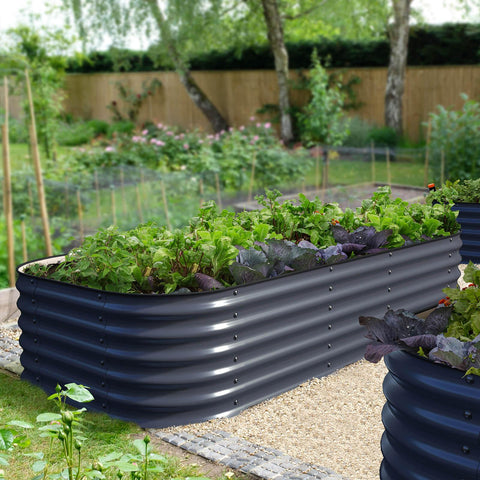Thriving in August: A Guide to Vegetable Gardening
Introduction
In the calendar of vegetable cultivation, August represents an important month for gardeners. It's a critical time to capitalize on the efforts you've already put in and continue sowing the seeds for a bountiful fall harvest. Whether you possess years of gardening experience or are a complete novice, the advice offered in this article will provide you with valuable insights on how to make the most out of your garden beds in August.
- Assess and Maintain Your Garden
Before diving into new plantings, take some time to assess your garden's current state:
- Remove spent crops: Clear out any crops that have finished producing, including weeds and diseased plants.
- Prune and stake: Support tall or sprawling plants like tomatoes, peppers, and cucumbers to prevent breakage and improve air circulation.
- Mulch: Apply mulch to retain soil moisture and suppress weeds.
- Plan for Fall Vegetables
August is the perfect time to start planning and planting for your fall garden. Some popular vegetables for fall planting include:
- Leafy Greens: Plant lettuce, spinach, kale, and Swiss chard for a fall harvest.
- Root Vegetables: Sow beets, carrots, turnips, and radishes for cool-season crops.
- Brassicas: Broccoli, cauliflower, Brussels sprouts, and cabbage can be started indoors for transplanting in late summer.
- Herbs: Continue planting herbs like cilantro, dill, and parsley.

- Water Wisely
As the weather can be hot and dry in August, it's crucial to monitor your garden's moisture levels:
- Water deeply: Give your plants a deep watering in the early morning or late evening to ensure the roots receive adequate moisture.
- Use a drip irrigation system: Drip irrigation can help conserve water and ensure even hydration for your plants.
- Pest and Disease Management
With warm temperatures come increased pest and disease activity. Be vigilant and take preventive measures:
- Inspect plants regularly: Check for signs of pests or diseases like yellowing leaves, holes, or unusual spots.
- Handpick pests: Remove insects by hand, or use organic pest control methods.
- Apply neem oil or garlic spray: These natural remedies can help deter common garden pests.
- Extend the Harvest
To maximize your August harvest, consider the following strategies:
- Harvest frequently: Pick vegetables as they ripen to encourage further production.
- Succession planting: Continue to sow quick-growing crops like beans, zucchini, and lettuce for a continuous supply of fresh produce.

- Preserve Your Harvest
Don't let your hard work go to waste—preserve the abundance of August by:
- Canning: Make homemade pickles, tomato sauce, or fruit preserves.
- Freezing: Freeze surplus vegetables like beans, peas, and corn for later use.
- Drying: Dehydrate herbs, peppers, or tomatoes for long-term storage.
- Prepare for Next Year
Use August to prepare for next year's garden:
- Compost: Continue adding organic matter to your compost pile to enrich your garden soil.
- Soil testing: Consider sending a soil sample to a lab to assess nutrient levels and pH. This will help you plan amendments for the upcoming growing season.
Conclusion
August is a dynamic time for vegetable gardening. By assessing your garden, planning for fall, managing pests and diseases, and preserving your harvest, you can make the most of this crucial gardening month. Embrace the warmth and abundance of August, and you'll be rewarded with a thriving and productive vegetable garden. Happy gardening!
